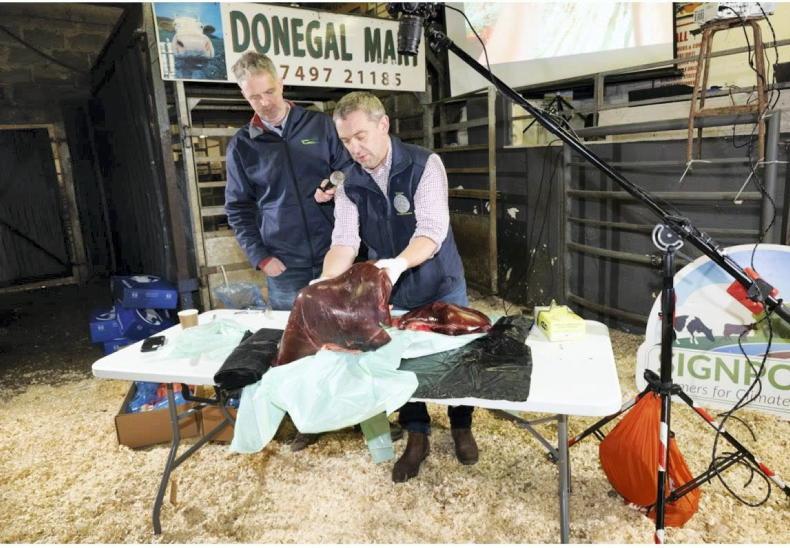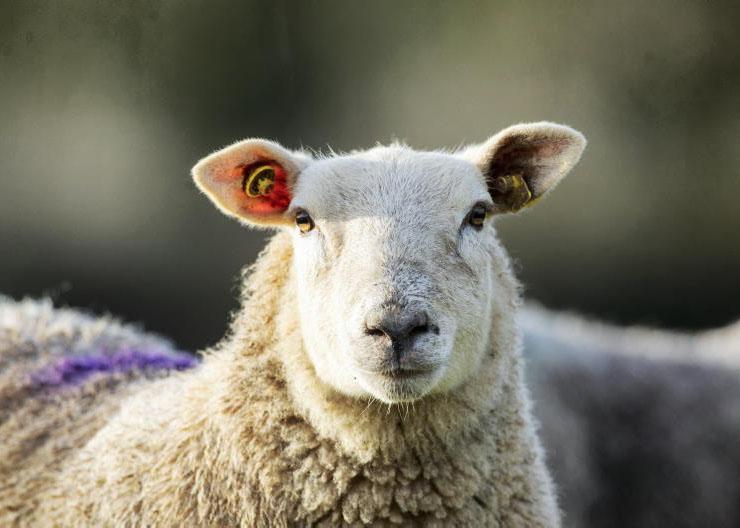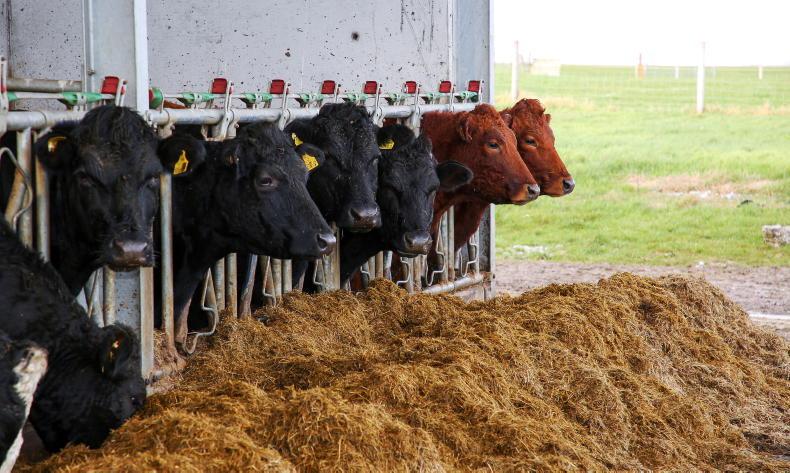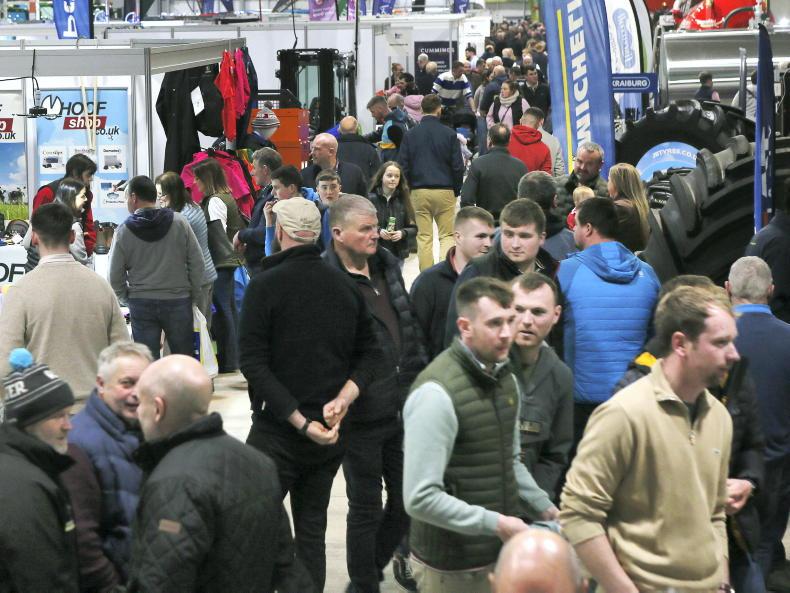There is always a list of jobs to complete on farms.
But in late summer, there are a few management tasks that should get priority.
We've outlined some below.
1. Treating calves for lungworm
Lungworm - or hoose - poses a growing threat to spring-born calves and autumn weanlings at this stage of the year.
As grass makes up an increasing part of a calf’s daily diet, they ingest more and more worms. The wet and mild summer has been ideal for worm burdens to multiply.
Keep on top of worming and don’t assume that all dosing products will give the specified cover period on the label.
Young cattle have no immunity to lungworm, whereas adult cattle will. The obvious sign of lungworm problems is the harsh cough.
Choose a suitable wormer, as some products give a rapid kill that can trigger pneumonia in calves with a severe lungworm burden. Ask your vet for advice if necessary.
2. Respiratory vaccines
If your herd has a history of pneumonia in autumn or post-housing, vaccinating against respiratory diseases is money well spent in a well-managed herd.
Vaccines are not a substitute for poor herd health. But in a herd where stresses are kept to a minimum, vaccines will make a positive impact.
Pneumonia vaccines can be expensive, but will be covered by the value of around 5kg of liveweight in good-quality weanlings.
If your herd has a pneumonia breakdown, a sick calf will lose a lot more than 5kg of liveweight. Plan your vaccine programme now, as some products need two shots.
3. Removing the stock bull
Cows served in the second half of August will calve down in late May to early June. That’s fine for a predominantly late-April- or May-calving herd.
But for a herd calving from February to April, cows that run late are a pain. Late cows are out of sync with the rest of the herd for dosing and weaning.
Therefore, removing the stock bull now is recommended. February- and March-calving cows have had almost four months to get back in-calf.
Many farmers are reluctant to take the bull away, fearing empty cows. The number of empty cows is small and are empty for good reason. These animals are better off sold on or culled.
4. Creep feeding calves
If the creep feeders are not already out, start now. Feeding calves for four to six weeks prior to weaning or sale eases the transition and improves weight gain.
When dosing calves, separating the bulls from heifers is good practice. This allows bull calves to be targeted with higher meal levels.
With breeding over, there is no issue with splitting grazing groups.
5. Fertiliser
Spreading 25 to 30 units/acre of nitrogen in mid-August will boost grass growth and help build covers for autumn.
The closing date for fertiliser is 15 September, just over four weeks away. But the earlier nitrogen is applied, the higher the growth response.
Read more
Beef Management: beef welfare scheme, clostridial vaccines and temporary housing
Beef Trends: frustration growing at continued cuts
There is always a list of jobs to complete on farms.
But in late summer, there are a few management tasks that should get priority.
We've outlined some below.
1. Treating calves for lungworm
Lungworm - or hoose - poses a growing threat to spring-born calves and autumn weanlings at this stage of the year.
As grass makes up an increasing part of a calf’s daily diet, they ingest more and more worms. The wet and mild summer has been ideal for worm burdens to multiply.
Keep on top of worming and don’t assume that all dosing products will give the specified cover period on the label.
Young cattle have no immunity to lungworm, whereas adult cattle will. The obvious sign of lungworm problems is the harsh cough.
Choose a suitable wormer, as some products give a rapid kill that can trigger pneumonia in calves with a severe lungworm burden. Ask your vet for advice if necessary.
2. Respiratory vaccines
If your herd has a history of pneumonia in autumn or post-housing, vaccinating against respiratory diseases is money well spent in a well-managed herd.
Vaccines are not a substitute for poor herd health. But in a herd where stresses are kept to a minimum, vaccines will make a positive impact.
Pneumonia vaccines can be expensive, but will be covered by the value of around 5kg of liveweight in good-quality weanlings.
If your herd has a pneumonia breakdown, a sick calf will lose a lot more than 5kg of liveweight. Plan your vaccine programme now, as some products need two shots.
3. Removing the stock bull
Cows served in the second half of August will calve down in late May to early June. That’s fine for a predominantly late-April- or May-calving herd.
But for a herd calving from February to April, cows that run late are a pain. Late cows are out of sync with the rest of the herd for dosing and weaning.
Therefore, removing the stock bull now is recommended. February- and March-calving cows have had almost four months to get back in-calf.
Many farmers are reluctant to take the bull away, fearing empty cows. The number of empty cows is small and are empty for good reason. These animals are better off sold on or culled.
4. Creep feeding calves
If the creep feeders are not already out, start now. Feeding calves for four to six weeks prior to weaning or sale eases the transition and improves weight gain.
When dosing calves, separating the bulls from heifers is good practice. This allows bull calves to be targeted with higher meal levels.
With breeding over, there is no issue with splitting grazing groups.
5. Fertiliser
Spreading 25 to 30 units/acre of nitrogen in mid-August will boost grass growth and help build covers for autumn.
The closing date for fertiliser is 15 September, just over four weeks away. But the earlier nitrogen is applied, the higher the growth response.
Read more
Beef Management: beef welfare scheme, clostridial vaccines and temporary housing
Beef Trends: frustration growing at continued cuts










SHARING OPTIONS